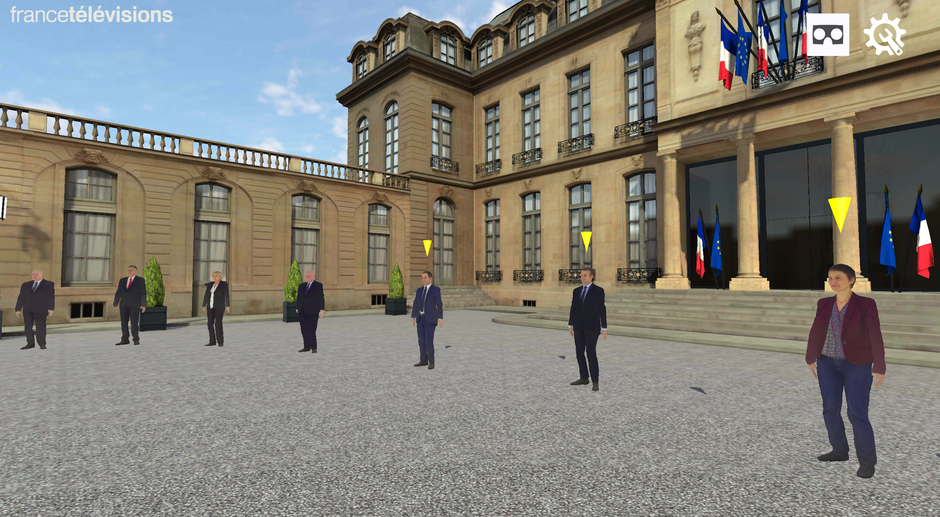VR at the service of information
The application has unveiled a new format for political information in line with tomorrow's uses. The use of immersive virtual reality for an information offer was still totally new.
Thanks to smartphones, tablets or, for the most well-equipped, virtual reality headsets, users could wander around the courtyard of the Elysée Palace recreated in 3D and go towards the candidates to discover their programs, their personalities but also and above all... compare their political positions.
The initial idea was to offer users a privileged meeting with the candidates for the presidential election and allow them to establish a new relationship with politicians, a more human, direct, individual and interactive relationship.
Immersive virtual reality technologies allowed to create a setting for this relationship where the user was an actor of the meeting and shared an unprecedented proximity with politicians who are usually unapproachable.
Avatars of the candidates
The realism of this relationship was made possible by the avatarization of the candidates. In partnership with the Nantes-based start-up Silkke, we invited them to enter a high-tech booth positioned in Paris for two months. In just a few seconds, 120 cameras simultaneously took pictures of the candidates in order to reconstruct their articulated 3D digital doubles.
No one had ever proposed this exercise to political figures before. It wasn't easy, but when they discovered the project, they understood the interest of the approach, the openness that it represented in terms of the targeted populations, especially the youngest, and above all, they understood that this application project was not a gadget for formatting, but a real new information offer.

For technology alone was not the goal of the project: it had to serve a quality of information. This is why France Télévisions' editorial staff carried out rigorous editorial work, adapting to the specific forms proposed by the application, but in total continuity with the group's overall approach to its other information media. Moreover, part of the application offered access to the group's other political content: replays of political broadcasts, for example, modules developed by political journalists, etc.
This application wanted to be part of a new form of information, while maintaining the quality of the content offered by France Télévisions. But it was also the site of a new proposal: a 360° tour of the Elysée Palace, a new experience that also helps discover the political world.
The reception of this application has remained much more confidential than today's major political formats on television or on the digital offer, but the objective has nevertheless been achieved: to show that France Télévisions knows how to propose new and relevant information formats; that the group is at the forefront of reflection on the use of innovative technologies to be in line with new, and future, media uses; and that the public service is a major player in reflection and innovation in the field of information.
The bet has been won!
Making-of:
Candidate avatarization
 Back
Back
 News
News











